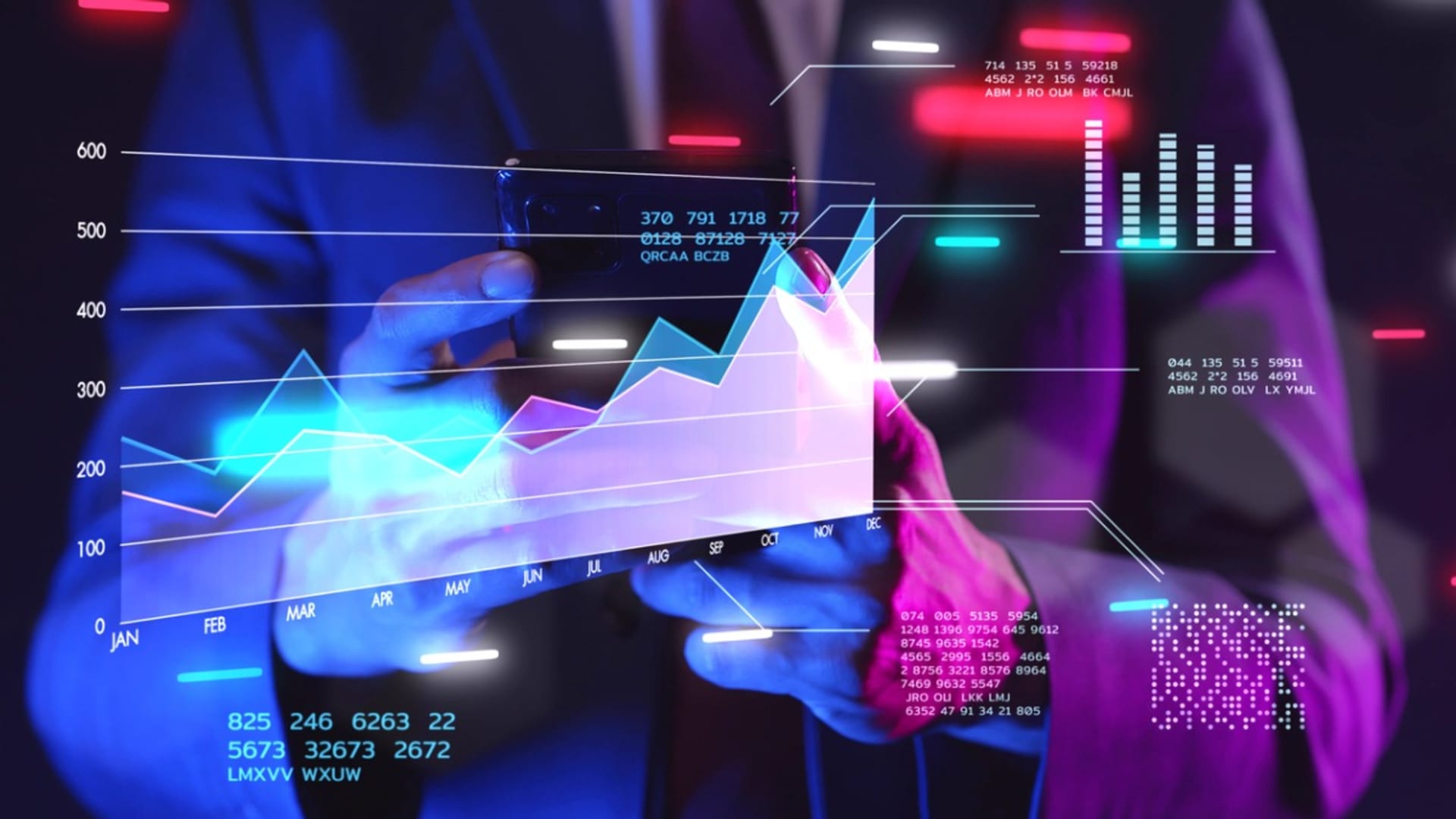It’s no secret that data science can be daunting. With complex algorithms, monstrous datasets, and a plethora of statistical models, it’s easy for any layman to get lost in the sauce. However, what I’ve come to realize after years of working with data is that the power lies not solely in the numbers, but in how we tell their story.
Yes folks, you read that right: storytelling is just as important in data science as it is in writing a bestselling novel or producing an Oscar-winning film. It’s all about taking those cold hard facts and turning them into something compelling—a narrative that captivates your audience and leaves them coming back for more.
When talking to clients or even colleagues who aren’t well-versed in data analysis techniques (we all know those guys who nod along but secretly have no idea what you’re saying), I find myself using metaphors left and right. Whether it’s comparing clustering algorithms to sorting socks by color or comparing decision trees to navigating through a choose-your-own-adventure novel, these comparisons help people visualize abstract concepts while also making me look like one hip cat.
But storytelling goes beyond just “dumbing down” jargon-heavy topics; it helps us make sense of our findings too. Think about it this way—if I come up with some groundbreaking insight about customer behavior on an e-commerce site but can only present my results via bar graphs and percentages—well, let’s just say eyes will glaze over.
However, if I start off by painting a picture around what spurred this research (maybe there was an increase in cart abandonment rates last holiday season) and take them through how we uncovered trends among different demographic groups before finally presenting findings with explanations pulled straight outta pop culture references (Yes, Karen from marketing, millennials really DO shop online because they don’t want physical contact with other humans.)—then BOOM! You’ve just turned data analysis into a bona fide art form.
At the end of the day, the ability to tell stories with meaning and impact is what sets truly great data scientists apart from those who are just churning out reports. Data on its own might be cold and hard, but throw in some sassy asides and Pulp Fiction quotes? That’s where the magic happens, y’all.
Understanding Your Audience: Who Are You Telling the Story To?
Now, let me tell you a little anecdote. Once upon a time (yes, we’re getting our fairy tale vibes on), I was giving a presentation on machine-learning technologies to a room full of investors. Armed with lots of statistics and technical jargon, I thought I had nailed it. But boy oh boy, how wrong was I! As soon as my presentation ended and the Q&A session began, all those blank stares made me realize that they hadn’t understood squat. Zip, zero, nada!
Who would have guessed that the client who hired the geek to do mathy stuff didn’t know about it? Yeah, I wasn’t a genius when I started, but to be honest, it’s one of the classic rookie mistakes. I learned then and there that mastering storytelling is more than just having fancy data charts or using buzzwords like AI or Big Data; you need first to connect with your audience. Before starting any data science project or presentation:
- Identify Your Audience: Who are you trying to communicate with? What motivates them?
- Understand Their Priorities: Are they executives who care about enhancing revenue? Are they human resources professionals who prioritize employee engagement metrics over sales?
- Look at Your Content from Their Perspective: Check if what you’re sharing is relevant to their job function duties and responsibilities
Trust me, connecting with your target audience through relatable stories tailored explicitly toward their challenges—whether real-life examples or case studies—can help win them over in no time!
It’s kinda like dating. When trying to impress someone (Investors/Clients/Bosses), presenting yourself as someone desirable means examining aspects such as humor, vocabulary, dress sense, wit, and charm. It’s not rocket science. Just be alert and tailor what works best for both parties involved in driving specific business outcomes.
So keep experimenting until you’ve found that perfect combination that’ll have everyone riding high on waves of inspiration while ensuring both sides hit their desired business metrics.
Choosing the Right Data: What Makes a Good Story?
Okay, let’s get real here. In the world of data science, we’re bombarded with many numbers and statistics every day. So how do we make sense of it all? How do we turn those endless rows of data into a compelling story that people actually want to hear? The answer is simple: you need good data.
But what makes for good data? Well, in my experience (and believe me, I’ve seen some truly awful datasets), there are three things you should keep in mind when selecting your data:
- Relevance—Your dataset needs to be relevant to the story you’re trying to tell. It doesn’t matter if you have mountains of numbers at your disposal if they don’t actually support your narrative. For example, if you were writing a story about trends in social media usage among teenagers, then Facebook user demographics from 2005 aren’t going to help you much.
- Quality—You wouldn’t go fishing with a broken reel and a rusty hook, so why would you use bad quality data for your analysis? Bad quality can come from a number of sources: inaccurate measurements/collection methods, missing or incomplete information, and biased sampling techniques, to name a few, which can lead to false conclusions or incomplete insights.
- Uniqueness—If everyone else has already analyzed the same boring old dataset before you (think basic GDP figures), then chances are no one will be interested enough to pierce their concentration on your presentation slides! But wait! Not necessarily! Try looking at it through different lenses—try regional comparisons within countries using alternative datasets not previously used by others—including interesting providers, such as street cameras collecting traffic and human volume analytics and other unconventional but still reliable sources that broaden horizons!
All-in-all, choosing juicy—yet credible—pieces of strategic, artistic liberties over a conventional approach could spice up even obnoxious topics like taxes.
Crafting Your Narrative: How to Structure Your Story
Before we start crafting our narrative, let’s take a moment to reflect on something we all do naturally—gossip. Yes, I said it. People love to share their experiences through stories, and gossip is simply a way of doing that.
Think about how you gossip (come on now, no judgment here). You start by introducing the characters involved, followed by setting up the context of the situation. Next comes the juicy details—what actually happened? Was there drama or intrigue? Did someone make a silly mistake, or did they save the day?
Finally, you end with some sort of conclusion—did everyone live happily ever after, or was there chaos? See what I’m getting at here? Gossip follows a similar structure to any good story.
So when crafting your narrative for data science projects, keep these elements in mind: introduce your audience to who/what you’ll be talking about, followed by setting up why this topic matters so much. Include interesting characters, whether they be influential people like CEOs or relatable ones such as customers who use their product every day.
Next comes my personal favorite part—conflict! This doesn’t necessarily have to be an intense showdown between two rival companies, but presenting an issue that needs solving can create enough tension and excitement for your audience to stay engaged.
As your story progresses toward its climax, make sure everything flows logically from one step to another while still keeping them entertained with anecdotes (I almost crashed my code when trying out machine learning regression models), metaphors (the data was hidden away deeper than Atlantis), and references (it’s like trying to translate ancient hieroglyphics).
Lastly, give resolution, even if it isn’t tied into a happy ending. Include actionable insights that can be executed in the future.
Voila! A compelling story about data science has been crafted! With gossip as inspiration and storytelling, skills as the tool, we have successfully created an enticing narrative. Now, bring those findings to life with plot twists, relatable characters, and unforgettable punchlines!
Adding the Human Element: Making Data Relatable
So here’s the deal: you need to tell a story with your data. And not just any ol’ story—we’re talking about getting personal. Think of it this way: would you rather read a report filled with dry facts and figures or a story that pulls at your heartstrings? Yeah, I thought so too.
I remember when I was working on a project analyzing user behavior on a new app release for our company. The numbers were there alright, but they weren’t really saying much, until one day we stumbled upon an interesting insight.
We noticed that users spent significantly more time on the app during early mornings and late nights…hmm intriguing right? But then when we broke down the actual activities they engaged in during those times—shopping for random items like protein powders online—BOOM! We had finally found our hook for creating engagement around workout routines, even outside gym hours!!
The point is: finding insightful stories from within hard data speaks into context where solutions could be applied. Bringing up how these figures speak deeply into people’s habits offers opportunities better tailored to their needs. If only thinking critically around such processes would yield results.
Incorporating simple everyday anecdotes while pouring over statistical models brings context that helps get your points across. Let’s be honest, mathematical models, more often than not, don’t quite match up with human experience, so it is our job to align them. Ultimately, the key to successful communication lies in invisible narratives—drawn lines between impossible dots making technical jargon accessible in amazing ways beyond charts or graphs.
Adding personality keeps eyes glued, hence creating a clear distinction between reports like “5% growth” vs. “how Susan lost 20 pounds using this app EVERY MORNING!’’. (cue audience gasps)
Your audience wants to feel like they are part of something. They want to be able to relate to and connect with the data you’re presenting. And for that, my friends, you need a good story.
So go ahead and add that human element—your inner storyteller will thank you!
Using Visuals to Enhance Your Story
There’s no denying it—humans are visual creatures. We respond better to images, shapes, and colors than we do to texts and numbers alone. Visuals not only help us comprehend data with ease but also evoke emotions that make our stories stickier.
Personally speaking, whenever I’m stuck while writing my blog posts on software development—charts, infographics, or memes always come in handy for lightening the mood and adding some context to back up points made within the post.
Metaphors also work well when you’re trying to explain complicated programming concepts or algorithms with visuals. Equate them with real-life situations, making them easier for people who may not be familiar with coding intricacies. This could be something as simple as comparing an Array.length method result after adding elements to going shopping at your local mall without your wallet (i.e., “I have nothing!”).
Other techniques, such as segmentation/splitting of graphs, can assist users in focusing on specific areas important for analysis purposes (e.g., splitting a bar graph between weekdays vs. weekends would best show what proportion of sales is released each day), providing one knows how their business really operates.
Pro tip: Use different types of chart formats (e.g., a pie chart will communicate percentage proportions more accurately compared to stacked bar charts when summarizing large amounts of datasets).
When done correctly, henceforth avoiding overuse or misuse, visuals help by enhancing emotion attached to user experience, leading to long-lasting impacts and leaving readers asking numerous questions about why said initiatives were undertaken, making meaning from significant milestones gained despite obstacles experienced along the path toward success.
The Power of Emotion: Creating an Emotional Connection with Your Audience
As software developers, it’s easy for us to fall into the trap of thinking that code is king. We see our work as purely logical and scientific—black or white, ones and zeros. But here’s the thing: human beings aren’t robots (yet), and we make decisions based on more than just cold, hard logic.
Emotion plays a huge role in why humans do what they do, and this applies even—or perhaps especially—when we’re dealing with data science. You might have all the numbers and statistics to back up your argument, but if you can’t tap into people’s emotions, you’re not going to get very far.
That’s where storytelling comes in. By telling stories about how your work has real-world impact or sharing personal anecdotes that illustrate your point, you can create an emotional connection with your audience that will leave a lasting impression.
I remember one project I worked on involved creating software for a children’s hospital that was used by nurses to help manage medications for critically ill patients. Rather than just presenting heaps of dry data about efficacy rates or error reduction percentages, I shared some heartwarming stories from nurses who were using our system: how they felt less stressed knowing their patient records were always up-to-date and how they could spend more time tending to the kids because documenting charts was now so much quicker.
These simple yet emotionally charged tales helped make our presentation memorable among other competitors in the pitching process, and ultimately won us approval for further research funding!
So the next time you’re working on a project, don’t be afraid of sprinkling it with personal experiences and an engaging narrative rather than relying solely on clinical logic. The power of emotion should never be underestimated!
Practice Makes Perfect: Tips for Practicing and Refining Your Storytelling Skills
Trust me when I say that being able to tell a good story is just as important as having strong technical skills in this field. So how can we refine our storytelling skills? Well, let me tell you from personal experience—practice makes perfect!
One way I like to hone my skills is by telling stories outside of work. It doesn’t matter if it’s just a silly anecdote about something that happened over the weekend or a more serious tale about overcoming an obstacle. The point is, practicing your ability to engage people with your words will only make you better.
Another tip? Keep it real. People can spot insincerity from a mile away—especially in today’s world, where everyone has their guard up on social media platforms like Twitter and LinkedIn. I often draw upon metaphors and analogies based on situations that the audience might be familiar with in everyday life. And if all else fails, don’t be afraid to use humor. What are some experiences when laughter helped break down conflicts at work?
Lastly, don’t limit yourself. Some of my favorite anecdotes come from reading fiction books! As they say, “Reading books takes us places we have never been before.” It helps in creating characters, staging scenes, and developing our senses. So go ahead and read some Steven King or Agatha Christie novels. You may get a sudden burst of inspiration!
Remember folks—being able to convey data in a compelling manner through the power of storytelling separates the average Joe or Jane from someone who truly stands out in their industry. Invest time into sharpening those literary devices. Let’s take over data science one well-told story at a time, shall we?
Conclusion: The Future of Storytelling in Data Science
Alright folks, we’ve made it to the end of this epic adventure in storytelling for data science. We’ve covered everything from defining key terms and concepts to crafting compelling narratives with your data. But before I part ways with you, I want to talk about the future of storytelling in this exciting field.
As a software developer myself, I can tell you that the demand for skilled data scientists who can effectively communicate their findings is only going to increase as time goes on. With mountains of information at our fingertips, companies are desperate (emphasis on “desperate”) for people who can make sense of all that raw data and turn it into actionable insights.
But let me be clear: simply being good at manipulating numbers won’t cut it anymore. If you want to stand out in this crowded space and really make a difference with your work, you need to become a master storyteller too.
Think about it like this: Data without context is just like music without lyrics—sure, it might sound good on its own, but it ultimately lacks any deeper meaning or connection. By weaving together a narrative around your analysis and presenting those insights in an engaging way, you’re giving people the tools they need not only to understand what happened but also why it matters.
Of course, becoming an expert storyteller takes serious practice—much like learning how to code or improve your writing skills! So don’t expect overnight success or some quick-fix solution here. As with anything else worthwhile in life, things take time…lots of time.
But trust me when I say, once you start to see results and realize others are benefiting from them, there will be no looking back!







